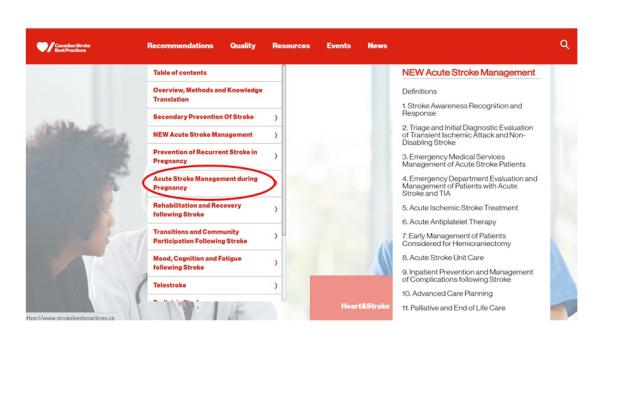
Check out the updated Canadian Stroke Best Practice Recommendations for Acute Care. Stroke team discussions across the South East are already underway about potential changes with our current clinical hyperacute and acute stroke processes. One recent change at the KHSC-KGH site was the implementation of tenecteplase (TNK) instead of alteplase (tPA) for eligible patients with acute ischemic stroke. Use of TNK as an alternative for IV thrombolysis was launched on September 1st. The team described the change as “fairly seamless” and “going well.”
Some notable changes in the Canadian Stroke Best Practices for Acute Care include:
- Use of an on-scene large vessel occlusion screen by paramedics
- Inclusion of combined CT + CT angiography for patients with TIA before discharge from ED
- Hyperacute treatments beyond standard time windows for select patients
- Inclusion/exclusion criteria for thrombolysis and endovascular thrombectomy (EVT)
- Use of TNK as reasonable choice for IV thrombolysis
- Management of thrombolysis-associated systemic or intracranial hemorrhage
- Care before, during and after EVT
- Timing of antiplatelet therapy and dual antiplatelet therapy
- Prioritizing access to Stroke Unit beds within 24 hours of arrival or in-hospital stroke
- Virtual stroke care methods
- Medical Assistance in Dying (MAiD) with appropriate patients
Clinical teams are currently digesting the updated recommendations. The KHSC-KGH team was the first hospital in Ontario to implement TNK in the place of tPA. KHSC participated in the Canadian AcT trial which facilitated the change given physicians and ED nurses were already comfortable with administration of TNK. Planning for TNK use included a few steps: engaging teams, seeking approvals with Pharmacy, retrieving materials from other hospitals, reviewing stocking needs, determining roles in TNK administration, updating many hyperacute clinical process documents, setting the September 1st launch date, and communicating with internal and external partners. The team finds it “easier to prepare and administer the TNK”. So far, the median door-to-needle has decreased by 3 minutes since the adoption of TNK. The KHSC experience has been shared with other hospitals across Ontario. Quinte Health is planning for this change in its upcoming workplan.
Click here to learn more about the hyperacute stroke best practices including the Acute Stroke Protocol and use of TNK at KHSC-KGH site.


